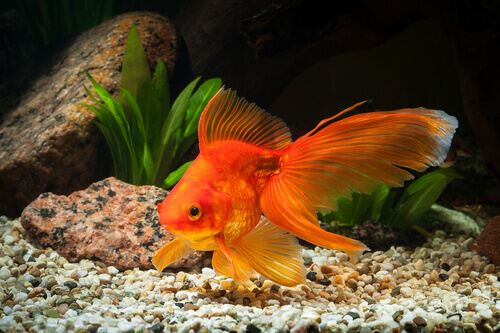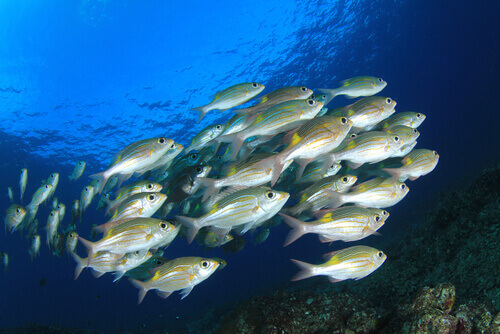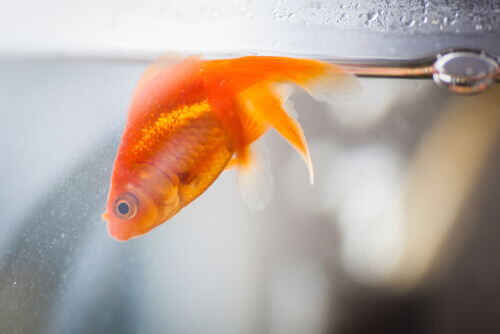Description and Purpose of the Swim Bladder in Fish

The swim bladder in fish allows them to move according to their needs whether they inhabit the sea, rivers, or an aquarium. Today’s article will describe it in more detail and discuss how it works. We’ll also give you an idea of how to treat an infection of this vital organ.
What’s the swim bladder in fish? Where is it?
This is the flotation organ of bony fish and it’s a sort of pouch with flexible walls located under the spine. The swim bladder allows the animal to control buoyancy in the water, so they don’t have to make a greater muscular effort whenever they move.
This kind of balloon, located in the abdominal cavity, allows a fish to swim without sinking beyond the level they need. It’s also for producing sounds, kind of like a sounding board, and has an emergency respiratory function.
The structure depends on the species and the habitat of a given fish. There are even swim bladders that are larger and divided in half. For example, the ones of carps need more buoyancy due to this animal’s weight.
Only some species lack swim bladders and this is the case of benthic and predatory fish such as sharks. This is because neither benefits from neutral buoyancy as they need to move quickly at various depths.
The swim bladder in fish stores oxygen, but how does air reach it? Well, it’s connected to the digestive tract. Thus, the fish opens its mouth and swallows the water, which filters through the gills. Then, the oxygen passes into the body and stays in this bag and the fish can use it whenever they need it.

It’s a curious fact that fish fill this organ according to their activities or habitats. For example, those that develop near the surface store only 15% of their capacity, while those that inhabit the depths save 90%. This is because the percentage of oxygen must be higher as soon as they submerge.
Two types of filling of swim bladders
One could divide fish into two main groups according to their swim bladder and how they obtain and store oxygen. On the one hand, there are the Physostomes and, on the other, the Physoclistous.
The bladder of the Physostomes -koi fish among them- connects to the esophagus through a duct. This is why they bring their head to the surface, breathe, and expel it in the same way.
In contrast, the Physoclistous use a gland that allows them to add gas to the buoyancy sac from the blood, and a large network of capillaries lining it. Thus, they can stay at certain depths and provide themselves with the oxygen they need.
Jellyfish also have a swim bladder and it works in the same way, allowing them to float effortlessly. They must also use water for propulsion though.
Swim bladder disease in fishes
One of the main health conditions in aquarium specimens is the swim bladder disease — easily detectable with the naked eye.

The main symptoms are problems maintaining buoyancy (swims sideways, stays on the surface for a long time, is upside down), lack of body control, a bulge in the ventral area, problems excreting waste, or a refusal to eat.
There are several reasons for this disease, among which we’ll highlight kidney problems, viruses, bacteria, genetic problems, stress, and poor quality food.
It’s important to consult a veterinarian as soon as you detect the swelling. They may have to do a needle puncture if they deem it necessary. In addition, you must separate the fish from the rest to avoid contagion in case of bacterial infection but also stress.